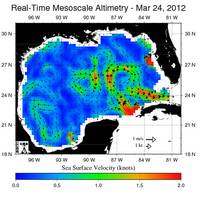
New Research on Gulf of Mexico Loop Current
efforts for a long-term LCS research campaign. Award Amount: $647,813Project Director: Barbara Kirkpatrick (Gulf of Mexico Coastal Ocean Observing System Regional Association)Project Team Affiliation: Gulf of Mexico Coastal Ocean Observing System Regional Association in cooperation with Fugro, Harte Research Institute, Ocean Sierra, RPS, Texas A&M University—College Station, Texas A&M University—Corpus Christi, and Woods Hole GroupLoop Current Floats: Near Real-Time Hydrography and Deep Velocity in the Loop Current System Using Autonomous ProfilersThis project will procure, deploy
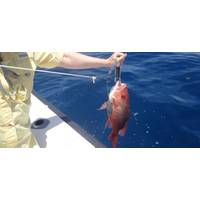
How Many Red Snapper Are in the Gulf of Mexico?
abundance and distribution of red snapper on artificial, natural and unknown bottom habitat across the northern Gulf of Mexico. “We’ve assembled some of the best red snapper scientists for this study,” said Greg Stunz, the project leader and a professor at the Harte Research Institute for Gulf of Mexico Studies at Texas A&M University – Corpus Christi. “The team members assembled through this process are ready to address this challenging research question. There are lots of constituents who want an independent abundance estimate that will be anxiously
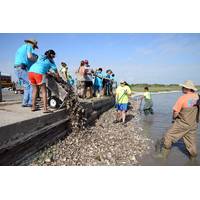
Fate of Past Oyster Reef Projects Unknown
The settlement of the Deepwater Horizon oil spill fines — the largest pollution penalty in history — will bring an unprecedented opportunity to spend billions of dollars on restoration projects in the Gulf of Mexico region. But new research by Harte Research Institute for Gulf of Mexico Studies graduate Dr. Brittany Blomberg has found that the fate remains unknown of hundreds of previous oyster reef restoration projects performed around the United States, an investment of more than $45 million and thousands of hours of labor. “Brittany’s research has exposed a flaw
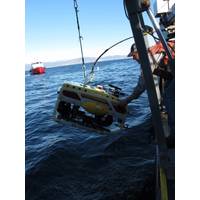
Ocean Energy Committee Members Selected -BOEM
of Alaska, Fairbanks Dr. Paul G. Falkowski—Rutgers University Dr. Mary (Missy) H. Feeley—ExxonMobil (Retired) Dr. Mardi C. Hastings—Georgia Institute of Technology (Retired) Dr. Bonnie J. McCay—Rutgers University Dr. Richard McLaughlin—Harte Research Institute for Gulf of Mexico Studies at Texas A&M University Dr. Jacqueline Michel—Research Planning, Inc. Dr. Timothy J. Ragen—Marine Mammal Commission (Retired) Dr. Mary Ruckelshaus—Stanford University Dr. William C. Webster—University of California
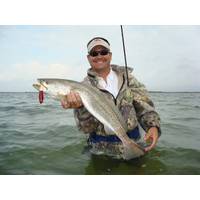
Grant Helps Fund Texas Sportfish Research
Harte Research Institute’s Sportfish Tracking Research Receives Grant from Rotary Club Texas A&M University-Corpus Christi’s Center for Sportfish Science and Conservation (CSSC) has received $10,000 from the 2015 Rotary Club of Corpus Christi Harvey Weil Sportsman Conservationist Award to continue research into Texas’ multibillion dollar sport-fish industry throughout the state. Dr. Greg Stunz, Director of CSSC and Endowed Chair for Fisheries and Ocean Health at the Harte Research Institute, said “This project allows us to continue vital research

Long-term Study May Reveal Deepwater Horizon Impacts
The Harte Research Institute (HRI) for Gulf of Mexico Studies at Texas A&M University-Corpus Christi will receive approximately $1.25 million over the next three years to work with Mexican colleagues in the southern Gulf of Mexico to look for residual impacts from the Ixtoc I oil spill of 1979-1980 on coastal areas, fisheries, and the deep sea. This long-term study will reveal what impacts may be in store 30 years after the 2010 Deepwater Horizon spill. Dr. Wes Tunnell, Associate Director of HRI, is leading the project. He is joined in this research effort by HRI endowed chairs: Drs. Jim
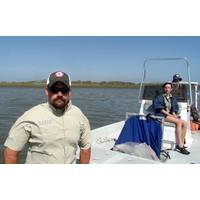
Research Shows Channels' Effects on Marine Life
Coastal communities will have another tool to understand the impact of opening tidal inlets in terms of the abundance of marine life and tourist dollars with the latest data from Harte Research Institute for Gulf of Mexico Studies. “There are areas all along the Gulf Coast experiencing this problem of closed tidal inlets due to development, decreased freshwater inflow or hurricanes,” said Quentin Hall, a researcher with Harte Research Institute (HRI) for Gulf of Mexico Studies. “While there is a lot of interest in opening closed inlets, the costs are often high. If we can look at

Students Protect Inlets from Oil Contamination
grant from the Texas General Land Office to create the oil protection plan for the Texas coast. The project will cover twenty-two inlets from the Rio Grande River to the Sabine River. Mr. H.A. Tony Wood, Director of the NSCS, and Dr. James C. Gibeaut, Endowed Associate Research Professor for the Harte Research Institute at Texas A&M-Corpus Christi, will serve as the primary investigators for the project. Under the TIPS program, researchers will develop specific plans for each tidal inlet detailing how to contain and possibly divert spilled oil before the connecting bays, estuaries, and rivers are
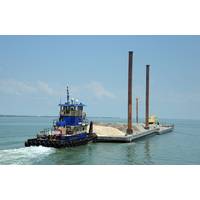
Island University Researchers Restore Eight-Acres of Oyster Reef
Researchers from the Department of Life Sciences at Texas A&M University-Corpus Christi and the Harte Research Institute for Gulf of Mexico Studies placed thousands of pounds of crushed concrete, rock and oyster shells in Aransas Bay and Copano Bay on Friday, August 30, in hopes that oysters will make their homes there. “We put down the foundation, the building blocks, that small larvae oysters need to create new generations of oysters,” said Dr. Jennifer Pollack, Assistant Professor of Marine Biology. The project is coordinated by Pollack and Gail Sutton, Assistant Director of


 February 2025
February 2025





